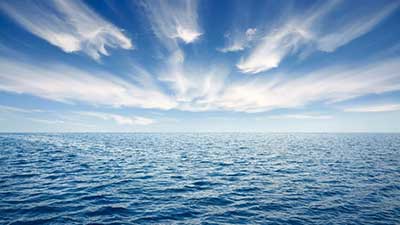Date: 03/09/2022
Relevance: GS-3: Conservation, Environmental Pollution, and Degradation, Environmental Impact Assessment.
Key Phrases: High Seas, UN High Seas treaty, Paris Agreement for the Ocean, ‘30×30’ goals, Territorial Sea, United Nations Convention on Laws of the Sea (UNCLOS), Exclusive economic zone, Marine Protected Areas (MPAs), Environmental Impact Assessments (EIAs), Access & Benefit Sharing of Marine Genetic Resources.
Why in News?
- Negotiations involving 168 countries, including the European Union, to agree on a UN High Seas treaty for protecting oceans failed recently.
Important terms under UNCLOS
- Territorial sea:
- According to UNCLOS, the territorial sea can be defined as the area which extends up to 12 nautical miles from the baseline of a country’s coastal state.
- Contiguous Zone:
- The contiguous zone can be defined as the belt which extends 12 nautical miles beyond the territorial sea limit.
- Exclusive economic zone:
- The exclusive economic zone can be defined as a belt of water that extends up to 200 nautical miles from the baseline of the coastal state. Thus, it includes both territorial sea and contiguous zone.
- High Seas
- High seas can be defined as the part of the sea that is not included in the exclusive economic zone, in the territorial sea, or in the internal waters of a coastal state or archipelagic waters of an archipelagic state.
- High seas are open to all states for freedom of navigation, freedom of overflight, freedom to construct artificial islands installation, freedom of fishing, and freedom of scientific research.
- High seas are reserved for peaceful navigation through international waters. However, regulations have been made to avoid the prevention of slave trade, piracy, seizure of ships, illicit narcotics trafficking, and unauthorized broadcasting.

What is the proposed UN High Seas treaty?
- Also referred to as the ‘Paris Agreement for the Ocean’, the treaty to deal with Biodiversity Beyond National Jurisdiction (BBNJ) has been under discussion for several years.
- The proposed treaty concerns the ocean existing beyond the Exclusive Economic Zones that lie from the coast of a country to about 200 nautical miles or 370 km into the sea, till where it has special rights for exploration. Waters beyond that are known as open seas or high seas.
- The treaty was to be negotiated under the United Nations Convention on Laws of the Sea (UNCLOS) of 1982 which governs the rights of countries regarding marine resources.
- As there is no treaty for conserving the health of vast swathes of the earth’s oceans, a UN resolution in 2017 decided to rectify this while setting 2022 as the deadline.
- The pandemic resulted in many delays, and later, a High Ambition Coalition, which now has more than 100 countries including India, the US, and the UK, came about and put the focus on ‘30×30’ goals – protecting 30% of the ocean by 2030.
There are five main elements to the High Seas Treaty:
- Marine Protected Areas (MPAs)
- High seas ecosystems, critical to the continuation of life in the ocean, are conserved by the establishment of fully protected, well-managed networks of marine protected areas.
- Environmental Impact Assessments (EIAs)
- Any proposed activity on the high seas that may negatively affect marine life is prematurely evaluated by scientists and relevant stakeholders.
- Access & Benefit Sharing of Marine Genetic Resources
- Developing nations have access to, and can benefit from, biological genetic materials discovered on the high seas.
- Capacity-Building & Marine Technology Transfer
- Developing nations have the capacity, technology, and educational/research opportunities necessary to participate in deep sea science.
- Cross-cutting Issues (These are issues that affect a number of
elements and are integrated throughout the new agreement)
- A treaty that protects all forms of marine life (from plankton to fish to whales), compliments and coordinates with existing organizations working to safeguard the ocean and marine life, and has measures in place to settle disputes among participating countries so continual conservation progress can be made.
How are the world’s oceans regulated as of now?
- Some treaties, along with the UNCLOS, regulate the conduct of actors on the high seas.
- The UNCLOS led to the establishment of territorial sea boundaries 22 km offshore, deciding the region up to which countries could claim full sovereign territorial rights, as well as the 200 nautical miles EEZ limit.
- It also created the International Seabed Authority and other conflict-resolution mechanisms.
- But a treaty dedicated to protecting ocean health does not exist as of now.
- Conversely, every country has the right to access open seas, resulting in large-scale drilling and trawling operations for catching fish and other animals for commercial purposes.
What are the risks of countries failing to reach an agreement?
- Ninety percent of global warming is occurring in the ocean, according to the NASA website.
- The effects of ocean warming include sea level rise due to thermal expansion, coral bleaching, accelerated melting of Earth’s major ice sheets, intensified hurricanes, and changes in ocean health and biochemistry.
- Excessive fishing has increased manifold over the years, and a third of species such as sharks and rays are at the risk of extinction, according to the World Wildlife Fund.
- Despite acknowledging these threats, members failed to agree on how to deal with these threats.
- There have been talks of resistance from countries that engage in deep sea mining of minerals or are heavily invested in fishing.
- Although we did make excellent progress, we still do need a little bit more time to progress towards the finish line.
Source: Live-Mint
Mains Question:
Q. What is the UN High Seas Treaty? What is its importance and why have countries failed to agree on it? Discuss.







